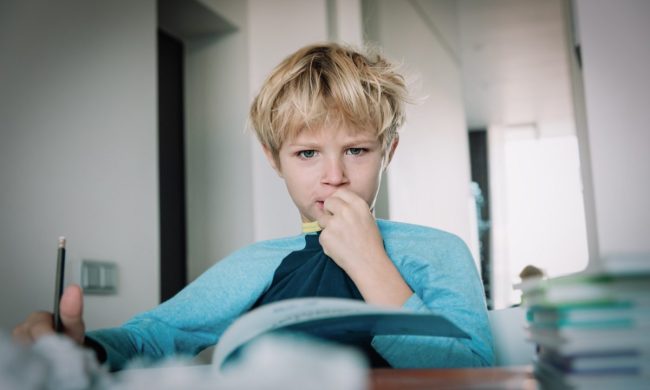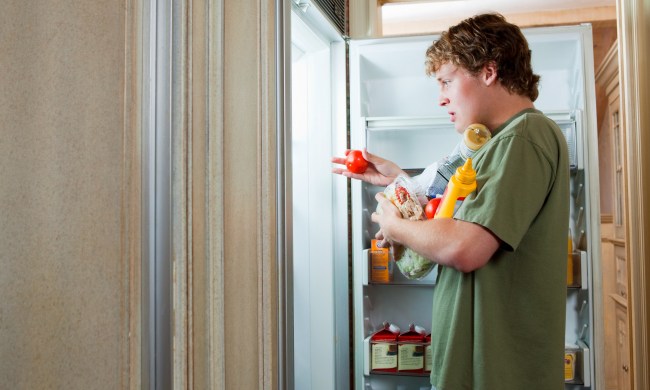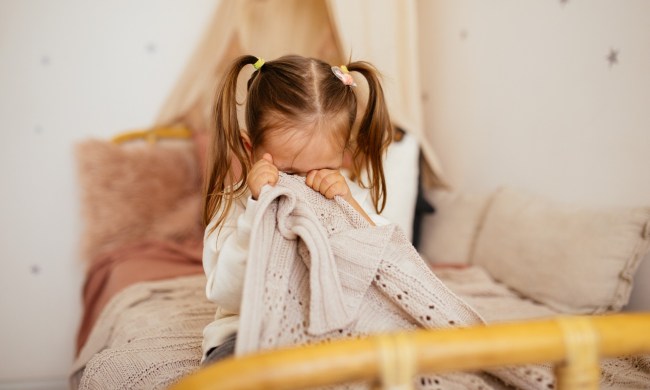Bibs are an essential item for babies, and bibs are optimal for toddlers, too (especially because they’re messy). There are several types of bibs out there, and you’ve probably heard of waterproof bibs — after all, these have gained in popularity in recent years. But what do you know about this style of bibs? Do you know enough to consider this sort for your child?
Waterproof bibs are made of a plastic coating or laminate to keep dribble and food off your baby. Silicone bibs are also waterproof and just as helpful during meals. However, waterproof bibs with a plastic coating or backing may not be the best choice for your little one. If cared for incorrectly, the waterproof quality on these bibs breaks down and leaves a regular bib behind. For this reason and others, you may want to rethink waterproof bibs.
Waterproof bibs require special wash settings
What makes waterproof bibs different from other types? Waterproof bibs are made differently than traditional bibs thanks to their special materials. They’re constructed with different materials or fabrics that make them waterproof. First, polyester fabrics with a plastic coating are popular choices. The coating makes the front waterproof while the back is made of a softer fabric for your baby’s comfort.

Another common material is silicone. Mealtime bibs with food pockets are usually made entirely with silicone. Other options include a polyester top with a silicone pocket for food debris. Alternatively, some waterproof bibs are made of several layers of cotton that prevent liquids from seeping to the back of the bib. While not entirely waterproof, cotton wicks away moisture quickly to keep your baby dry. Lastly, some waterproof bibs are made with a fabric front attached to a plastic backing. This keeps one side completely dry while the front absorbs liquids.
So what do waterproof bibs’ special construction mean? When such bibs are not cared for correctly, their waterproof quality breaks down and you’re left with a regular bib. Sure, the dual sides keep moisture off the front, but the fabric side still absorbs messes.
You may be able to wipe down the waterproof side quickly, but the fabric side still needs to be washed. Most waterproof bibs require low heat and tumble settings to conserve their quality. Many parents also choose to hand-wash these bibs and let them air dry, but this is time-consuming and impractical, which brings us to our next point.
Waterproof bibs may grow mildew or mold easily
Mold and mildew thrive in damp crevices and cracks. One sure way to prevent them from growing on your baby’s clothes is to wash clothes immediately after taking them off. But we all know we don’t always have time to do the laundry in time, let alone right after a mess.
You might purchase a waterproof bib to prevent this precise problem, but you may find that waterproof bibs suffer the same fate as traditional bibs when left damp.

For context, waterproof bibs often come with special linings that attach the waterproof layer to the fabric layer. In these folds, mildew and mold can grow easily. Many parents have found that leaving waterproof bibs damp encourages mildew or mold to thrive in these cracks.
When you don’t have time to properly wash your bib after every meal or use, this can quickly become a problem. To prevent mold, it’s recommended to dry the article of clothing in high heat often. But again, waterproof bibs require low heat or no heat; otherwise, they start to break down or lose their waterproof capabilities.
Furthermore, mold on a mealtime bib is unhygienic and can trigger a mold allergy. You may then consider using bleach to eliminate mold, but this, too, can be too harsh on a baby’s sensitive skin. A safer alternative is soaking the bib in vinegar water, but this doesn’t ensure that the mold stain will be completely gone.
Waterproof bibs may be bulky and uncomfortable
Waterproof bibs are often made of stiff plastic or plastic-backed materials. These can be heavy and bulky, which makes them uncomfortable for smaller babies. This also makes them impractical to wear all day as compared with regular cotton bibs. When babies are crawling around, you want a bib compact enough that they don’t drag around on the floor or come off easily.
If you use the same waterproof bib from mealtime as a drool bib, leftover food particles may get dragged around your home or on stain-prone surfaces like bed sheets or rugs.
Waterproof bibs may increase food mess
Milk burp dribbles, purees, drool — all these will end up on your baby’s clothes or yours when you use a waterproof bib. A waterproof bib may unintentionally make more mess, especially at mealtime. Although feeding-time bibs have a special pocket for catching food, you can’t use the front of the bib to wipe off your baby’s face or hands in a pinch.

When you start teaching your little one how to use an open cup, waterproof bibs will direct that water, juice, or milk straight to your floor. The point? Liquid messes might wreak havoc in your household because they’re so efficient at keeping moisture away. We know, it’s a dilemma that almost makes your head spin.
Toddlers and crafty babies might get a kick out of scooping out food from the food tray and flinging it across the kitchen. These bibs may be waterproof, but they are far from mess-free.
Waterproof bibs made of synthetic materials may irritate baby’s skin
Waterproof bibs are made of synthetic fabrics like resins that make them waterproof and wrinkle-resistant, but they can cause skin allergies and irritation. This includes vinyl and plastic-coated bibs. Even silicone, which is a common waterproof bib material, may cause allergies in some babies.
Waterproof bibs are certainly useful in some cases, but there are some drawbacks you should consider. Since they are designed to repel liquids, they might make more of a mess than you bargained for. Their delicate construction also means you have to take care to wash them properly or you may end up wasting money with a broken down bib. If you are set on trying a waterproof bib, go for it! We hope this waterproof bib guide was a good starting point in your search.


